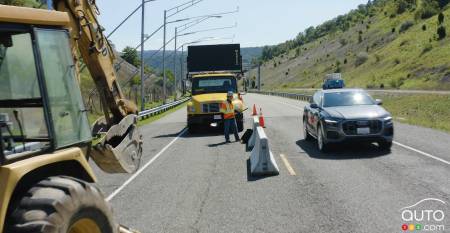Despite existing laws that require drivers to stop when following or passing a school bus that has its turn signals on, too many drivers fail to stop. While some are downright delinquent and irresponsible, others are simply distracted.
Audi is working on a system to address this problem.
The German automaker, along with two partners (Applied Information and Temple, Inc.), is working with the state of Georgia to develop technology that allows vehicles to communicate with infrastructure or other vehicles, and which would operate in school zones (and detect buses) using the 5.9 GHz cellular network.
The system is in the early stages of testing and will be implemented in two phases in Alpharetta, Georgia, where the Infrastructure Automotive Technology Laboratory is located.
The first phase will alert drivers approaching a school zone, and the system can be modified to share this information based on the time the school is open and when children are present outside. The second will see school buses be specially equipped so they can broadcast messages to drivers approaching the school indicating where they are and that it is forbidden to overtake them. In both cases, specially equipped Audi e-tron models will be used. The project is expected to be completed in the first half of 2021.
The technology enabling this communication is called C-V2X (cellular vehicle-to-everything). It uses cellular networks to create connections between vehicles and infrastructure. School panels will act as units that transmit data while buses will have on-board units that share data. Specially equipped Audi e-trons will connect to the local network and display the information transmitted by the panels and buses.
Discover Shopicar! All new makes and models and all current promotions.

Audi already uses a similar system (V2X) for traffic-light countdowns in cities such as Las Vegas. Once the test is completed, if it proves successful and enough school districts follow suit, the technology will spread.
There’s no word for now about bringing the technology to Canada, but there’ no reason to believe that the technology couldn't be implemented as well if it proves to be effective. And no one can argue with the objective of the technology; if this kind of system saves just one life, it will have proven to be very effective.
